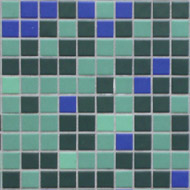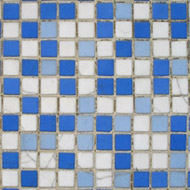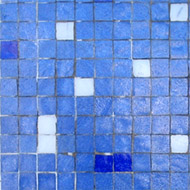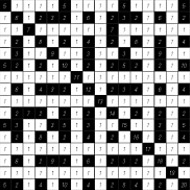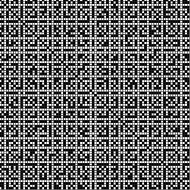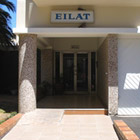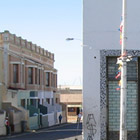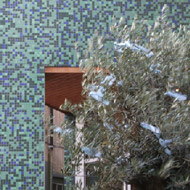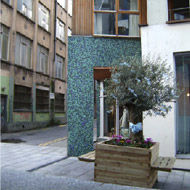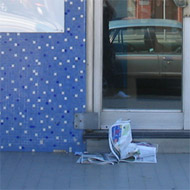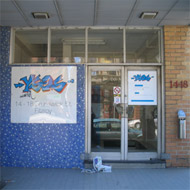| RalphBorland.net | ||||
| Pattern | ||||
|
||||
| Left to right: tile patterns in Dublin, Cape Town, and Melbourne.
Soon after my return to Cape Town from New York in 2003, I noticed a peculiar tile pattern covering the side of a building on Woodstock Main Road. A pattern of small square black and white tiles, it struck me because of the seemingly random distribution of the two colours. The tiles were clearly decades old, yet their random, pixel-like distribution pattern seemed very contemporary - like the kinds of patterns I'd gotten into in my Generative Art class at NYU; like those seen in cellular automata. Cellular automata are a bit like simple, artificial life-forms, created from a few basic rules, and that you could draw out on graph paper or using counters on a chess board (depending on how complex you want to get). The most famous cellular automata is the "Game of Life", devised by Richard Conway in the 1950s, who used a chess-board and counters in demonstrating his idea (that link to an explanation of the Game of Life will help explain what cellular automata are more generally). More complex and varied cellular automata form the basis of the 'New Kind of Science' promoted by Stephen Wolfram, who uses them to explain almost every natural phenomenon. They're interesting to digital artists - as Leo Villareal's assistant, I'd worked on electronic pieces based on similar principles, like his artwork Supercluster that covered the side of PS 1 in 2003 and 2004. There are a number of cellular automata applications you can play with online - here's one: the MJcell
|
||||
|
||||
| Typical cellular automata patterns in different scales.
Soon after spotting this first tile pattern, I started to see this same type of random distribution pattern, in the same square tiles, but in different colour combinations, in different parts of Cape Town. I spotted it on workshops and stores on industrial Lansdowne Road, in the lobbies to expensive apartment buildings in Seapoint, on cafes and video stores in Mowbray, behind a water feature in a city shopping mall. A larger pattern emerged that contained the smaller ones. What could such a pattern, covering such varied geographies in Cape Town, reveal? It runs across other patterns that overlay and shape the city; patterns of maintenance and neglect, of wealth and poverty, security and vulnerability. |
||||
|
||||
| Locations around Cape Town
As I started to travel more widely, I saw this same tiling style in other towns and cities in South Africa. Then I saw it in Kuala Lumpur, Malaysia, on the way to Australia for Next Wave - and in Melbourne, Sydney, and when I moved to Ireland, in Dublin, and in small towns all over the country. It's in Edinburgh, Glasgow, Dundee and villages across Scotland. It's in London. I've seen it in photos taken in China. What I want now is to collect documentation of this tiling pattern from around the world, and use the photographs to make an artwork. Rather than attempting to collect this information myself, I'd like to have other people find this feature where they are, and send in images of it to me. In this way a network of people around the world will add another 'Life'-like pattern to the production of the work, and the patterns revealed, or constructed, will span the globe.
I'm interested in the idea of taking one phenomenon and tracking it, to see what it reveals around it - and I'm also attracted to the idea of creating a obsessive compendium of one formal category. I like the work of photographers like Bernd and Hilla Becher, who created a 'typology' of industrial buildings, tracking similar architectural forms around the world.
|
||||
 |
||||
| Images from the cover of the Bechers' book 'Typologies'.
The way I'm photographing the pattern, and asking others to do similarly, is to take a photograph of a 10 x 10 tile section of the grid, and two more photographs at varying distances away from the tiled wall. That way we'll build a set of the tile patterns themselves, and their contexts, and in the final work I'll be able to create a rhythm from those sets. I'll also keep track of the geographical location of each of the tiled walls. |
||||
|
||||
| Temple Bar, Dublin, Ireland, 2007 | ||||
|
||||
| Brunswick Street, Melbourne, Australia, 2006 | ||||
|
I made this rough animation of one approach (as a Shockwave .swf) which will open in a new window: pattern animation rough 1024 x 768.
|
